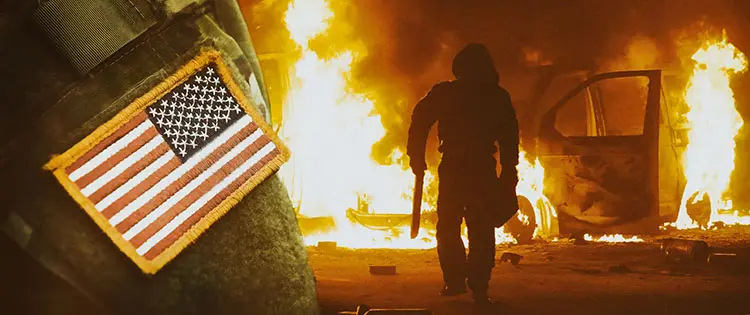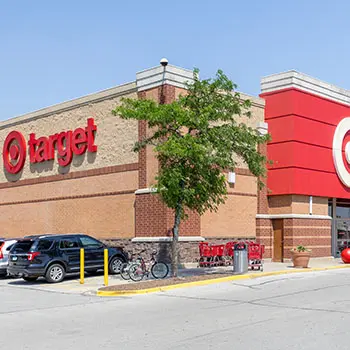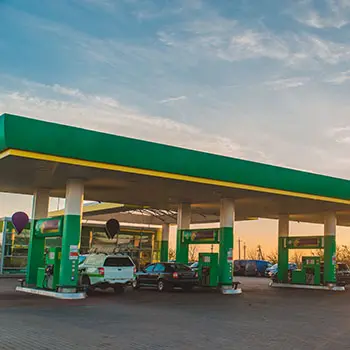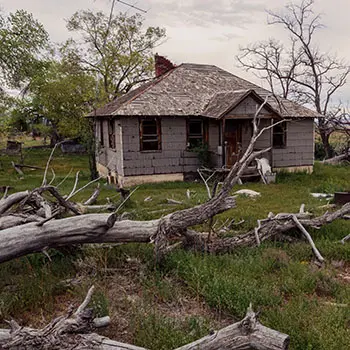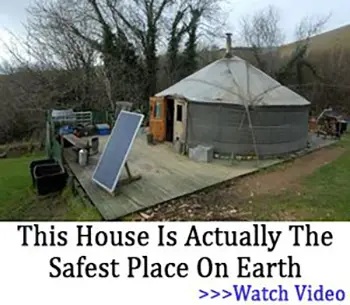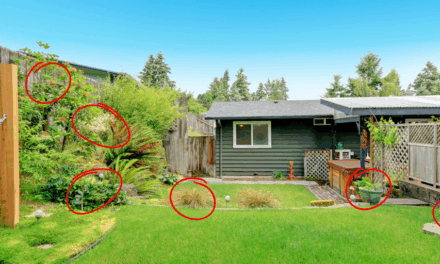Desperation can drive ordinary people to extremes. Over the years, I’ve seen how quickly society’s rules crumble when disaster strikes.
Places that seem safe today can become high-risk zones overnight.
After analyzing looting patterns across various crises, I’ve pinpointed specific danger zones to avoid. Here’s what I’ve learned about each type of location.
Urban Centers & Dense Populated Areas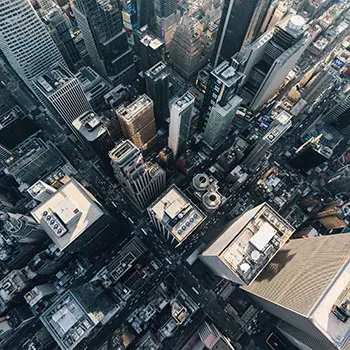
The transformation of urban centers during a crisis follows patterns I’ve studied extensively. A close friend who worked emergency response during Hurricane Sandy shared with me how quickly Brooklyn’s busiest shopping districts became unsafe.
Within 48 hours, the same streets where people once casually shopped became territories that even police struggled to control. Dense urban areas become dangerous for several interconnected reasons. The sheer concentration of people means resources deplete faster.
When basic supplies run low, tension rises exponentially. I’ve analyzed dozens of crisis reports that show how urban layout itself can trap people – the same grid system that makes cities efficient during normal times creates choke points during emergencies.
Related: Urbanites Moving To Rural Paradise Ruining It For The Locals
Urban centers can be particularly hazardous in times of crisis, primarily due to limited escape routes often hampered by gridlock and blocked streets, which can make evacuation nearly impossible. With high population density, essential supplies like food, water, and medical provisions quickly run out, heightening the risk of shortages.
The complex layout of urban streets can also work against residents, trapping them between hostile groups or hazards. Additionally, urban areas contain a high concentration of valuable targets within close proximity, which can attract looting or other threats. Finally, emergency services may be quickly overwhelmed, reducing response capabilities and leaving many without aid when it’s most needed.
Large Retail Chains
My research into retail security during crises has revealed why these locations become such volatile hotspots. Big box stores attract crowds during emergencies for the same reason they attract customers normally – they have everything people need, all in one place.
A store manager I interviewed after the 2021 Texas ice storms described how their location became a flashpoint within hours of losing power. The store’s design, perfect for normal retail operations, worked against them during the crisis.
Wide-open spaces designed for shopping carts became impossible to secure. Multiple entrance points meant security couldn’t effectively control access.
Related: 11 Items To Look For At An Amish Market
The danger at these locations grows as crisis stages escalate. The first wave brings an initial rush of panic buyers clearing out shelves and creating chaos as people stock up on essentials. Next comes a second wave of organized groups who specifically target high-value items, often sweeping through with a plan and purpose.
Finally, a third wave emerges: individuals growing desperate, searching for any supplies left behind. Each stage amplifies the risk, creating increasingly volatile environments as resources diminish.
Hospitals and Pharmacies
Medical facilities face unique challenges during crises that make them particularly dangerous. A veteran emergency room nurse, who’s also a fellow homesteader shared with me how their hospital’s security protocols completely broke down during an extended power outage.
The combination of desperate patients, valuable supplies, and overwhelmed staff created an untenable situation. What makes these locations especially risky is the critical nature of their supplies.
People who need medication don’t just want it – they require it for survival. This desperation changes the dynamic completely.
Law enforcement officials I’ve interviewed note that pharmacy break-ins often involve more violence than other types of looting because the stakes are literally life and death for some people involved.
Related: Medicines Every Homesteader Should Stockpile
The risk factors escalate as time goes on. On Day 1, there’s an influx of legitimate patients seeking immediate care, filling up waiting rooms and placing a heavy burden on resources. By Days 2 and 3, local residents begin to arrive, hoping to refill essential prescriptions before supplies run out.
By Day 4 and beyond, the situation becomes even more precarious as outside groups begin targeting medical supplies, often creating dangerous, high-stress encounters as resources dwindle.
This progression has been documented across multiple crisis situations, from natural disasters to civil unrest. The pattern remains remarkably consistent, regardless of the initial trigger event.
Gas Stations and Fuel Depots
Basic transportation becomes a matter of survival during crises, making fuel locations natural flashpoints. What started as long lines and frayed tempers during last year’s hurricane, evolved into something far more dangerous within 72 hours of power loss.
The risk at fuel locations stems from their fundamental role in modern society. Without fuel, people can’t evacuate, can’t run generators, can’t reach safety. During my research into crisis patterns, every major incident report highlighted fuel stations as critical danger zones.
Related: How To Make Bio Fuel From Kitchen Scraps
The desperation at these locations often exceeds what we see at food distribution points because fuel represents both immediate survival and the possibility of escape.
Several key factors make these locations especially hazardous in a crisis. Most stations hold only 3-5 days’ worth of fuel under regular conditions, and underground tanks require electricity for pumping, creating vulnerabilities during power outages.
The presence of cash on-site increases their appeal to criminals, while the limited defensive positions available make it difficult for staff or customers to protect themselves. Additionally, stations are often situated at key intersections, turning them into natural chokepoints where congestion and confrontations are likely to escalate.
Government and Aid Distribution Centers
While these locations aim to help, they often become scenes of conflict. Through my volunteer work with local emergency response teams, I’ve learned why good intentions aren’t enough.
These centers face a perfect storm of challenges: high-value resources, crowds of desperate people, and often inadequate security.
A FEMA coordinator shared with me how their distribution center became increasingly dangerous during the 2020 wildfires despite their best efforts. The problem wasn’t just the number of people – it was the rising tension as supplies ran low and wait times increased. When people fear they won’t get their share, basic civility often breaks down.
The progression typically looks like this:
Early Phase:
- Orderly lines and cooperative behavior
- Basic needs being met
- Sufficient staffing levels
Middle Phase:
- Growing crowds and longer waits
- Rising tension as supplies dwindle
- Staff fatigue setting in
Critical Phase:
- Supply shortages becoming evident
- Crowd control breaking down
- Security resources are stretched thin
Schools and Community Centers
Many people naturally gravitate toward schools and community centers during emergencies, viewing them as safe havens. These facilities often lack proper security infrastructure and contain valuable resources that attract the wrong kind of attention.
A school administrator I interviewed described how their facility, designated as an emergency shelter, became increasingly unsafe during an extended power outage. The cafeteria’s food storage always intended for students, suddenly became a target. The multiple buildings and entry points proved impossible to secure effectively with limited staff.
Related: 25 Basic Life Skills That Should Be Taught in School (But Aren’t)
These risk factors highlight the vulnerabilities of certain locations in crisis situations. Large, open spaces are challenging to secure, especially with multiple access points that increase the chances of unwanted entry. Being known locations of food storage makes them obvious targets, drawing attention from those in need or looking to exploit the situation.
The limited security personnel on-site may be insufficient to manage large crowds or defend against potential threats. Additionally, the presence of vulnerable people in these areas further complicates security efforts, as they may require assistance, adding to the strain on resources and personnel.
Abandoned Properties
Through my years of research into this topic, I’ve learned that abandoned buildings become magnets for dangerous activity. These properties offer concealment and often contain overlooked resources.
Local law enforcement reports consistently show how empty buildings become staging areas for criminal groups during extended emergencies.
Abandoned properties present distinct risks in emergencies. Often poorly secured, these buildings are attractive for opportunistic entry and exploitation. They’re typically situated in areas with limited police presence, making them even more vulnerable to unauthorized use.
Related: Leaving Your Property Like This Might Get You Killed
Their perceived value—as places that might contain leftover supplies or valuables—further draws attention. Hostile groups may use these sites as observation posts, gaining a vantage point without arousing suspicion. Monitoring these properties effectively is challenging, which can lead to increased risks for surrounding areas and individuals passing through.
The danger extends beyond the properties themselves. Entire blocks can become unsafe as abandoned buildings attract increasingly desperate people. During my research into urban crisis patterns, I’ve seen how these properties often become the epicenters of broader security breakdowns.
This doesn’t mean every empty building becomes dangerous, but patterns show that areas with high concentrations of abandoned properties face increased risk during emergencies. The key is understanding these locations represent potential threats rather than assuming they’re simply empty spaces.
What You Should Do Instead
Retreat to rural, low-population zones. These zones offer distinct advantages for long-term sustainability and security.
My homestead sits deliberately positioned well off main roads, using specific location criteria I’ve developed through years of experience. First, maintaining a minimum 5-mile distance from major highways reduces exposure to transient traffic while ensuring reasonable access to supplies.
Natural barriers surrounding the property – including dense forests, rolling hills, and a seasonal river – provide both privacy and natural resources. I’ve ensured multiple escape routes through careful mapping and relationship-building with neighboring properties.
Related: Stay Away From Your Neighbor If He Does This
Limited visibility from secondary roads adds another crucial security layer, while our sustainable water source – a year-round spring – guarantees one of life’s most critical resources. When evaluating potential properties, consider how these features work together to create a resilient, defendable homestead.
Strong communities become lifelines during challenging times.
I’ve witnessed firsthand how pre-existing networks handle crises more effectively than isolated homesteads. These relationships, built on trust and mutual benefit, become invaluable when normal systems fail.
Our community network focuses on practical, actionable elements that enhance everyone’s preparedness. Regular meetings keep information flowing and skills sharp, while shared protocols ensure we react as a coordinated unit during emergencies.
Dutch Oven Recipes Cowboys Survived On
Do You Make These Fatal Mistakes in a Crisis? (Video)
How To Store Your Food If You Don’t Have A Lot of Space
Ingenious Traps You Can Set Up On Your Property To Catch Looters

